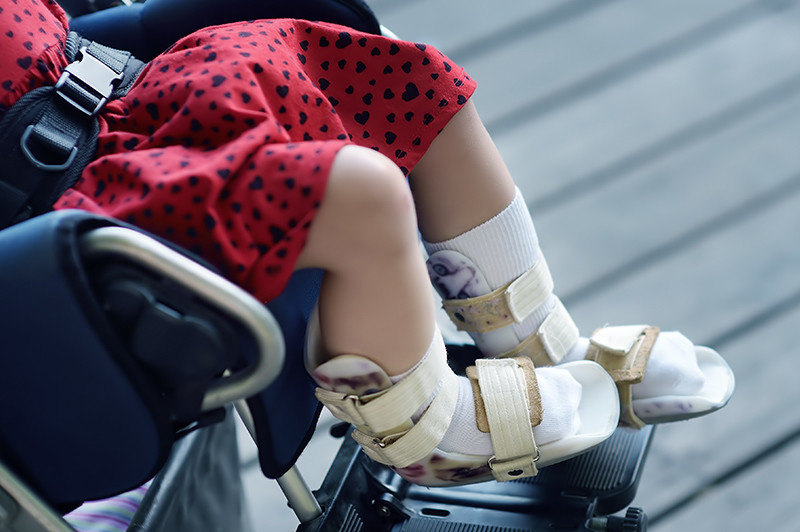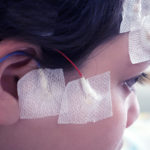Research offers guidance on genetic testing for cerebral palsy

A recent meta-analysis confirms what a small study at Boston Children’s found last year: About 1 in 4 children with cerebral palsy (CP) who had DNA testing had genetic variants likely to have caused or contributed to their condition. With the new data, the researchers have expanded the traditional view of the condition and offer guidance for genetic testing.
“Once someone is diagnosed with cerebral palsy, clinicians may assume there was a birth injury without investigating the possibility of a genetic cause,” says Siddharth Srivastava, MD, in the Department of Neurology, who co-led the study with Annapurna Poduri, MD, MPH. “This meta-analysis reinforces that we should pursue genetic testing in many cases.”
Analyzing exome sequencing and microarray data
The researchers evaluated the diagnostic yield of two tests: exome sequencing, which looks at the genes that code for proteins, and chromosomal microarray (CMA), which looks for chromosomal deletions or duplications. Starting with more than 200 papers in PubMed, they narrowed their search to relevant reports on exome sequencing in 15 cohorts and CMA in five cohorts. In all, these studies involved more than 2,400 people with CP, both children and adults.
Genetics may play a contributing role even when there are other identified risk factors for CP. Pinpointing a genetic cause can sometimes redirect care.”
Similar to the pilot study, 23 percent of patients undergoing exome sequencing had a genetic diagnosis that may have had the potential to change their care. Exome sequencing was especially informative when there was no clear cause for CP, yielding a diagnosis 35 percent of the time, as compared with 7 percent in patients with known CP risk factors. The diagnostic yield of CMA was just 5 percent.
Testing identified a variety of causative genes, 23 of them affecting at least five patients. The most common of these was CTNNB1-related disorder, accounting for 3 percent of identified genes.
When should a patient with cerebral palsy have genetic testing, and what kind?
Based on their findings, Srivastava and Poduri recommend comprehensive genetic testing for patients with CP of unknown cause, or those with a known cause but who have clinical features suggesting a genetic disorder. Such features may include:
- more than one affected family member
- intermarriage within the family
- dysmorphic facial features
- congenital anomalies
- normal brain MRI findings
- spasticity or weakness that is progressing
- a perinatal history that does not seem to explain the severity of spasticity and/or intellectual disability
- unexplained metabolic disturbances
Whole-exome sequencing should be offered as a first-line test if whole-genome sequencing is not available. If the exome results are negative, CMA analysis is recommended for now. As whole-genome sequencing becomes more common in clinical practice, CMA analysis won’t typically be necessary.
Any genetic testing should also include the child’s parents, when possible. This improves the accuracy of diagnosis and sheds light on whether a genetic variant was inherited or occurred after conception (de novo).
What if genetic testing is negative?
When testing doesn’t immediately provide a genetic diagnosis, Srivastava and Poduri recommend reevaluating patients after two to three years to see if their presentation has changed. Examples might include spasticity that is progressing or emergence of new clinical features. Since new genes are discovered all the time, it may be worth reanalyzing patients’ sequencing data.
“Genetics may play a contributing role even when there are other identified risk factors for CP,” notes Srivastava, who is also part of the Cerebral Palsy and Spasticity Center. “Pinpointing a genetic cause can sometimes redirect care, and potentially lead to precision treatments as the biological effects of the genetic variant become known.”
Refer a patient to the Cerebral Palsy and Spasticity Center.
Related Posts :
-

Rethinking the origins of cerebral palsy
Cerebral palsy (CP) has widely been viewed as the result of perinatal oxygen deprivation or other birth-related factors like prematurity. ...
-

A path forward for genetic testing in unexplained epilepsy
The number of genes implicated in epilepsy has grown rapidly in the past decade. This raises questions about what tests ...
-

What it’s like to have SDR surgery: Scarlet’s story
Scarlet is 9 years old. When she was 7, she underwent selective dorsal rhizotomy (SDR), a procedure in which a surgeon cuts ...
-

Research 2022: Tackling disease in new ways
Researchers across Boston Children’s spent 2022 imagining new solutions to old challenges in health and medicine, opening the door to ...





